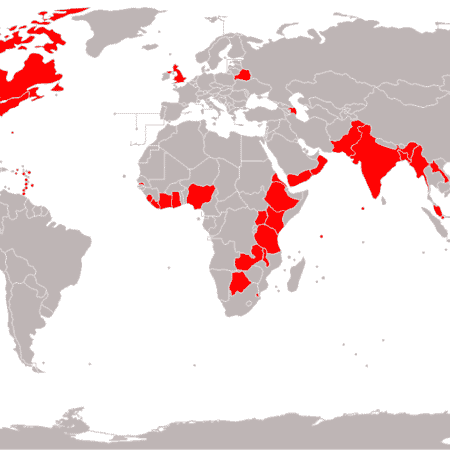
Pakistan Institute of Development Economics
- Home
Our Portals
MenuMenuMenuMenuMenuMenuMenu - ResearchMenuMenuMenuMenuMenuMenuMenu
- Discourse
- The PDR
- Our Researchers
- Academics
- Degree Verification
- Thesis Portal
- Our Portals

Should Pakistan Shift to a Proportional Representation Electoral System?
Politics in Pakistan like in most other regions of the world is increasingly complex. Issues such as dynastic politics, elite capture and persistence of extractive institutions characterizes the country’s politics. These issues mostly are deep-rooted structural issues that have no straightforward solutions. There are other issues that might be relatively easier to address. One such issue pertains to the plurality based system of election in Pakistan. There is increasing evidence that the plurality system, also known as “first-past-the-post (FPTP)” system, has led to parties that don’t get majority votes forming governments that can be described as not truly representative of the aggregate will of the electorate.[i]
For example, in the last two General Elections for the National Assembly (NA), PLMN (2013) [ii] and PTI (2018) [iii] won 33 percent and 32 percent of votes respectively and yet were still able to form majority governments by bringing in independent winning candidates and MNAs from various regional parties. In simpler terms, it means that every 2 in 3 of those people who cast their votes did not vote for the party that eventually formed the government in both 2013 and 2018.

In 2013, PML-N despite only receiving about 33 percent of the total votes cast that year ended up with 49 percent of the total seats in NA. Similarly, in the last elections PTI received about 32 percent of the votes and ended up with 44 percent of seats in NA. This disproportionality is a direct consequence of the ‘First-Past-The-Post’ system that the country follows. The current system only allows for single-member constituencies with plurality voting i.e. only one member per each constituency with most votes is elected to the legislature.
The current system is one that the country inherited upon its independence from the British Empire, and it’s largely owing to convention that the country has persisted with its use. While it is true that some of the countries that were traditionally part of the British Empire still maintain the FPTP/Plurality system, the system has been replaced by majority of the countries worldwide who instead implement varying forms of more proportional systems. The map below[iv] shows that only a few countries still adhere to the FPTP/Plurality system of election.

In reality, as the map above shows, Pakistan too also doesn’t have a purely FPTP/Plurality system anymore, as currently reserved seats for women and minorities are allocated to parties in proportion to the percentage of votes they get in the elections respectively. Despite this, for all elected constituencies, the country still adheres to the single-member constituency plurality electoral system.
Proponents of the FPTP/Plurality system often cite the fact that one significant advantage that this system has is its simplicity in both understanding and implementation as compared to the various forms of proportional electoral system. They argue that for a proportional system to be effectively adopted the population needs to be highly literate, something that is not the ground reality in Pakistan. This view however is not entirely true as there are many proportional systems that are not convoluted and hold the key towards electing governments that are representative and truly reflect the collective will of the electorate. One such system is called ‘ranked-choice voting’ in which instead of the candidate winning the most votes getting elected, a candidate has to gain majority vote (at least 50%) in order to get elected from the constituency. Following table lists out key differences between the FPTP/Plurality system and the Ranked-Choice electoral system for a single constituency.

The Ranked-Choice system through a clever ranking system combined with recounting means that winning candidate for a constituency has through an indirect method a claim to be being elected by the majority of the electorate. This then on a macro-level translates into parties being selected with higher number of aggregate votes which are more in line with the resulting percentage seats that are allocated to them in the legislature.
The Ranked-Choice system is just one example of several different systems that can be used to elect more representative governments that are proportionally in-line with actual number of votes that respective competing parties gain. Another additional possibility that should potentially be explored is to introduce multi-member constituencies instead of the current single-member constituencies. There is a plausible argument to be had that those constituencies that have markedly more number of total votes should have the provision of multiple winning candidates being selected to the legislature.
In a nutshell, changes to the electoral system will not be easy to introduce and will initially require considerable political and institutional will. Nevertheless, once electoral workers have been trained and a proportional system implemented, the country will benefit from having representative governments. Time and again, in Pakistan it is often observed that population quickly gets disaffected by elected governments leading to various forms of non-democratic means including ‘street-politics’ being employed by opposition parties. The fact that the current system allows for a party for whom every 2 in 3 voters have not voted is invariably linked to such agitation. A proportional system for elected constituencies will be a significant step towards representative governments that reflect the collective will of the electorate.
[i] Haque, Nadeem & Ullah, Raja, Towards a Stable Economy & Politics, PIDE
[ii] General Elections 2013 Report, Election Commission of Pakistan
[iii] General Elections 2018, Election Commission of Pakistan
[iv] Electoral Systems Around The World, FairVote.org
Download full PDF


